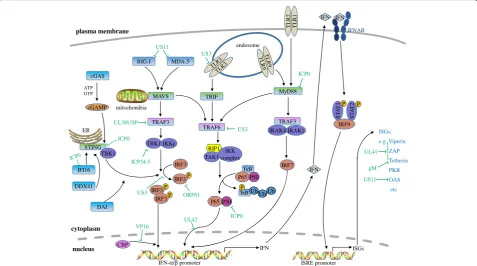Evasion of host antiviral innate immunity by HSV 1, an update
Full text
Figure

Related documents
Of note, Nef po- tency remained unchanged when virions were produced in cells depleted from CD81 but significantly decreased by 22% when virions were produced in Ezrin-depleted cells
These data show that, following whisker pad infection of ROSA26R reporter mice, two HSV-1 recombinants deficient for LAT expression establish latency in the TG at a higher
The large RNA polymerase (L) protein of human parainfluenza virus type 2 (hPIV2) binds the nucleocapsid, phosphoprotein, and V protein, as well as itself, and these interactions
Identification of two critical amino acid residues of the severe acute respiratory syndrome coronavirus spike protein for its variation in zoonotic tropism transition via a
The role of cell cycle arrest in RSV replication was further confirmed by using three different pharmacological inhibitors of cell cycle progression, i.e., purvalanol A, olomoucin,
siRNA knockdown of UbcH8 in A549 cells inhibits ISG15 conjugation and causes a 12-fold reduction in the IFN-induced antiviral activity against the synthesis of the NS1A protein
The higher-resolution difference map between iB19 and VP2 VLPs confirmed that the differ- ence density between wild-type B19 virus and VP2 VLPs does not connect through the
Recommender systems have also been made by researchers as an important response to information overloading problems, for its ability to provide personalized and meaningful